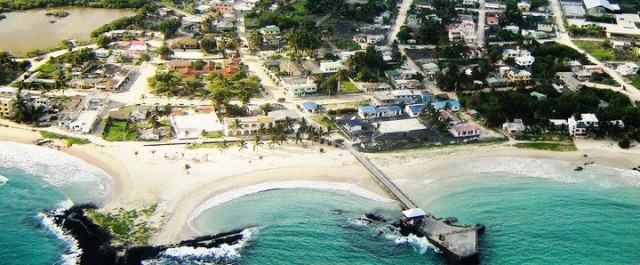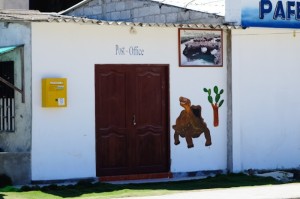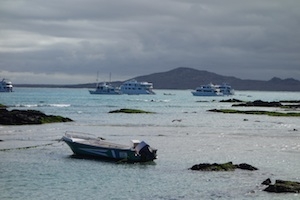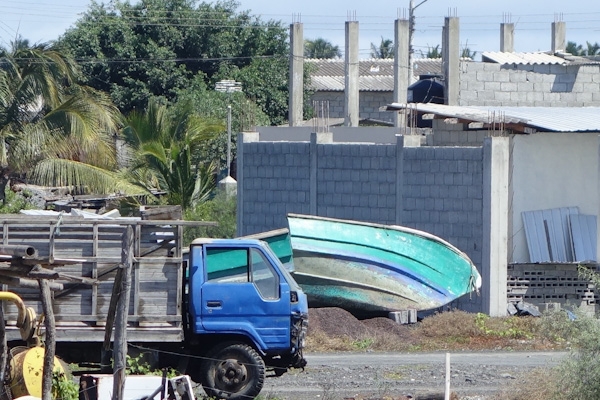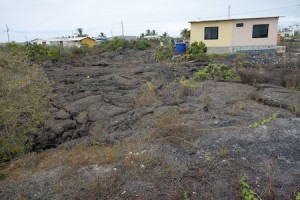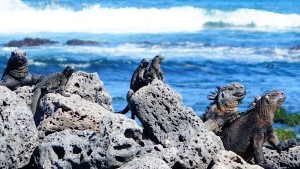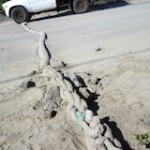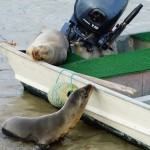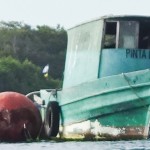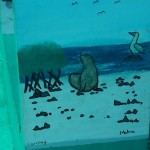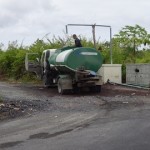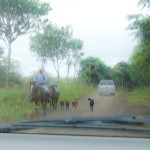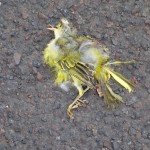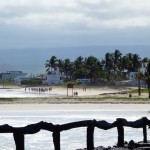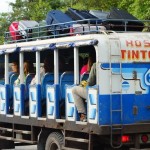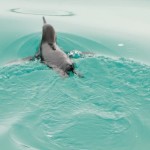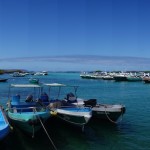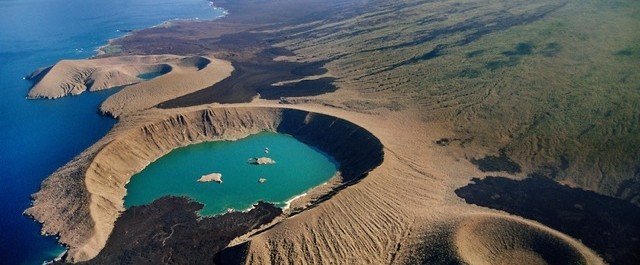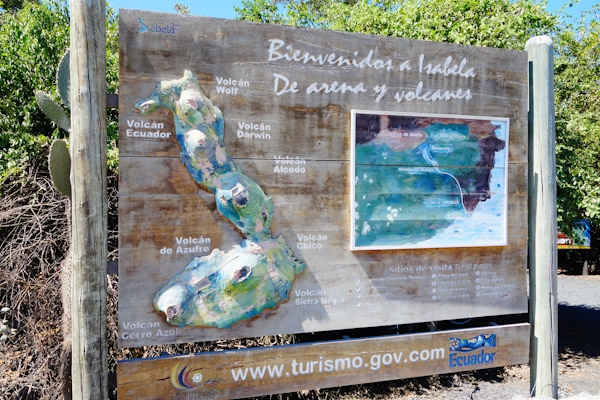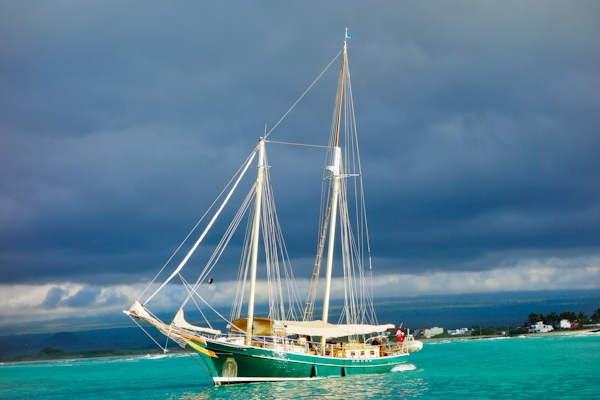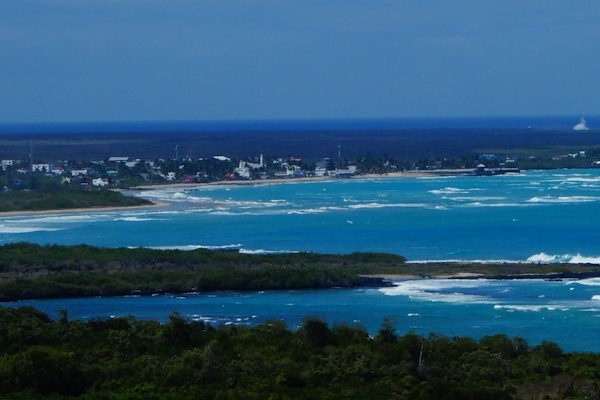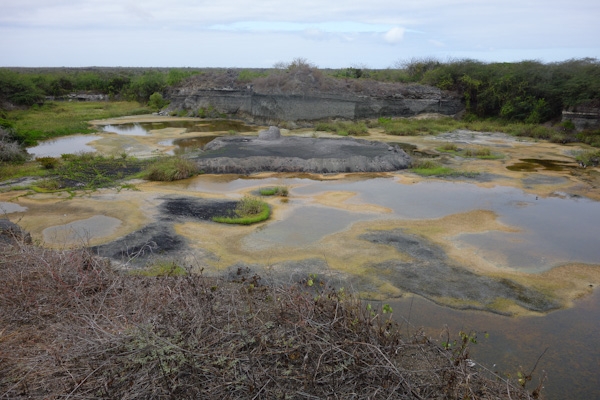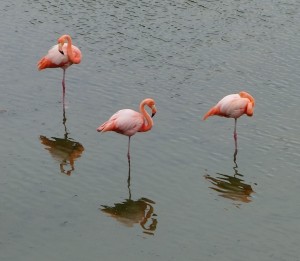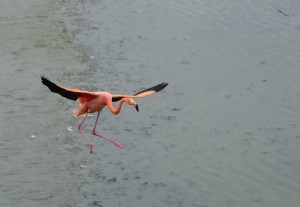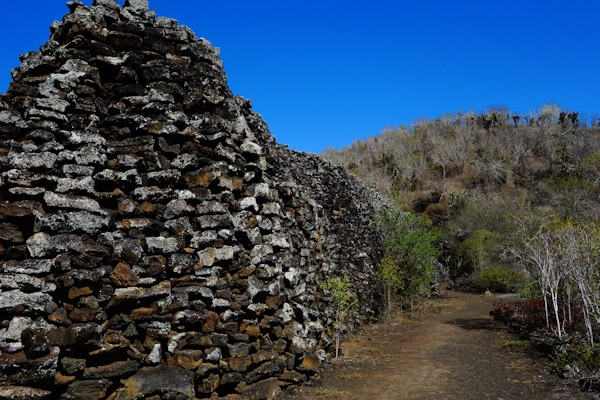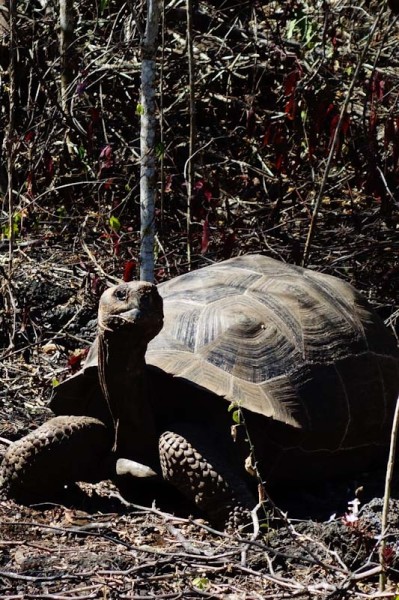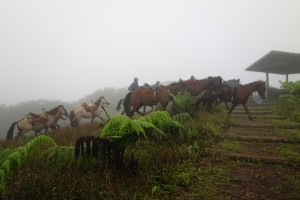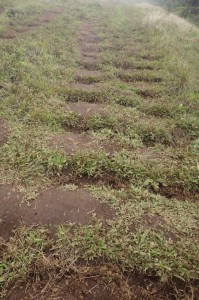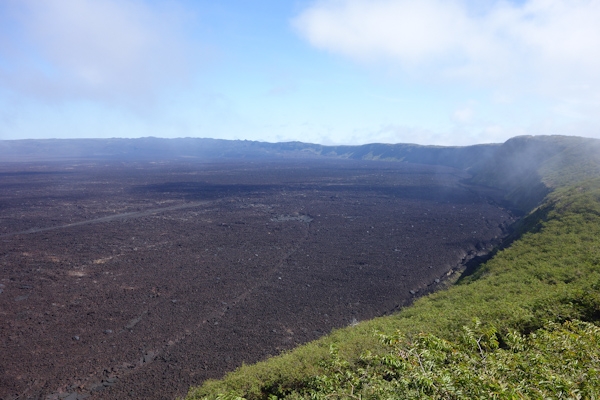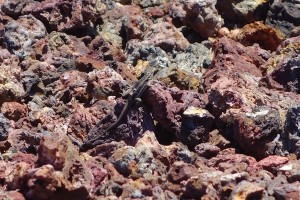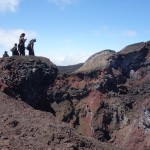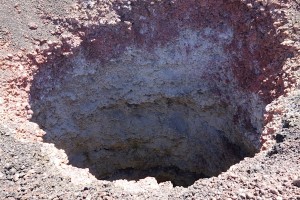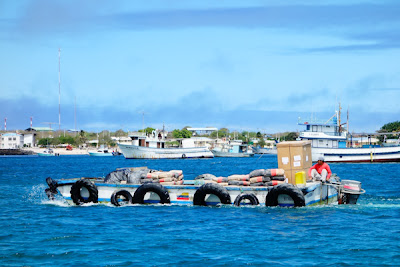Puerto Villamil, with its 3,000 or so people, in a district roughly ten blocks deep and the equivalent of maybe twenty blocks long, is the only town on Isabela, the largest island in the Galapagos. Tourism is the World Tortoise, or Atlas, supporting its economy. Restaurants, small hotels and guest houses, dive trips, boat and land tours, a farmer’s market for seasonal produce from the few farms on the slopes of the volcano, some kind of fishing, and a good number of tourists in for the day from their excursion boats, are what make the wheels turn here. It’s a pleasant low-keyed place where we stayed a week or two in July, when the ocean currents bring cool water and mandate wetsuits for swimming, at least for me. I was going to say it was our favorite island, but let’s just call it neck and neck. Each island we visited, Santa Cruz and San Cristobal being the others, had something to recommend it, and so much depends on the people you meet.
Acoustic Ecology
Among the people we met was a group of students from the University of Miami. They were under the supervision of a sound engineer, Colby Leider, (“he’s famous!” one student told us), and a former NY Times reporter, Joseph Treaster (“he’s famous too!”), and were learning to listen and record. An expensive liberal arts education, but useful things to know, don’t you think? Mr. Treaster’s students of cross-cultural communication were writing short pieces to be published at themiamiplanet.org. Last year’s students wrote about the nail parlor, and a local surfing contest, for example.
I learned also that there’s more to making soundscapes than just dangling one’s smartphone into the tortoise corral as I had been doing. I was hoping to share with you the measured scrape of carapace over dry ground, but I got mainly little splashes of bird song; my target tortoise outlasted my phone battery. But Dr. Leider told me to persist- there is much that has been done with smartphone technology, he said.
Turns out I’ve been deaf to the uses of sound. Sound engineering (it’s in the music department) is full of fascinating projects. For example, what level of urgency should the various alarms in a hospital convey? Acoustic documentary: what can be learned about the state of a forest by listening to insects after a logger invasion? It’s a meaty major compared to the one I chose, political science, which, too late, revealed itself to be mainly unappetizing gristle and fat. You can read more here about Dr. Leider and his work: http://ccs.miami.edu/?p=4369.
Boats and Harbor
The small boat harbor, and the anchorage, are a fifteen-minute walk out of town, to the right in the aerial photo, from redmangrove.com’s blog, at the top of the post. For a while all entrance three buoys stood on the beach in freshly-painted splendor, but eventually, and with great merriment, they were towed into position.
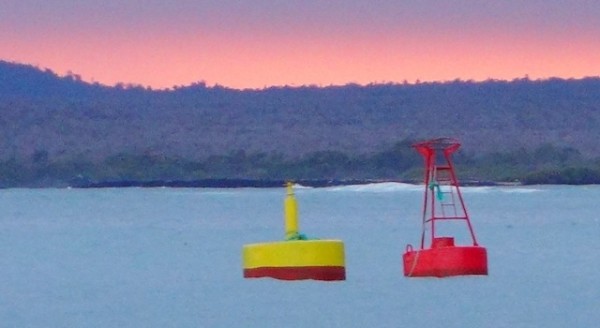
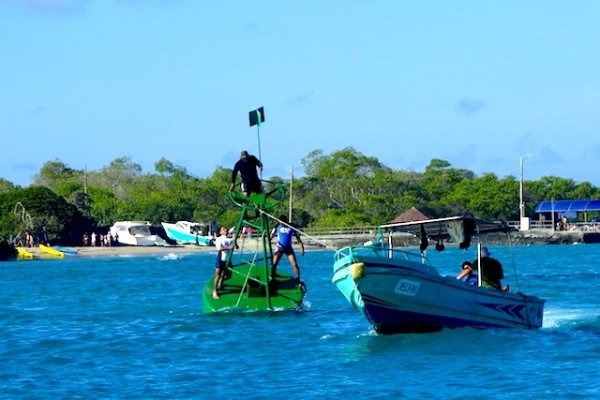
The approach to the anchorage is pretty straightforward, if you don’t try to go too far in, because there are some low-tide surprises. After that it’s a rather circuitous dinghy trip ashore, as the inner part of the harbor is full of small reefs and sandbanks. You’re only seeing a small part of that here.
The tour excursion boats in the outer anchorage have done it so often they can do it in OUR sleep. We’d wake up in the morning with a “where did that come from” moment, or several. The inter-island boats, which look like sport-fishing boats about 40 feet long, outfitted with benches and lifejackets, took some astonishing shortcuts at mid-tide. I don’t think the water in the break in this reef is much more than 4 feet deep where this fellow is barreling through, because I had been snorkelling nearby when I saw him coming and skedaddled! 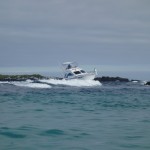
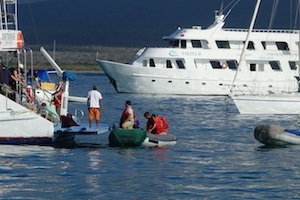
Solutions to conservation issues
Among the most curious things we saw in Puerto Villamil were several cut-up fishing boats. Isabela is one of the places where there was direct, personal and heated conflict in the last decade between the Galapagos National Park people and the fishers whose activities were being monitored in the interests of conservation and sustainability. One confrontation involved the mayor of Isabela cutting down slow-growing old mangroves, then filling over them, to make a (potential) dock for the tourists to come to see the slow-growing old mangroves, their associated penguins etc.
The government and its agencies are supposed to be conserving Galapagonian resources, but often claim they have no resources of their own to devote to the cause. And of course opinions vary as to the best use of any resource, and some voices are louder than others. That’s politics! So sometimes the National Park is assisted by international government, aid, or conservation groups. For example, anyone familiar with the group Sea Shepherd will know them to be a kind of guerrilla activist marine wildlife conservation group. Apparently, one of their activities was to fund sniffer dogs on Isabela, which we saw and wondered about as they met water taxis at the dock. The dogs and their military handlers looked so incongruous in that setting. It’s a small operation, but I’d love to know what the effect of it has been. Maybe one of the Miami students could inquire….
The dogs are supposed to detect illegally harvested wildlife items, sea cucumbers and shark fins for starters, and prevent them from being smuggled out. Since part of the definition of fisher is ‘boat of my own’, and rumor has it that the offending fishers camp on the far off and desolate shorelines, cutting mangrove to smoke and preserve their catch, I wonder how effective the dockside sniffer dogs are. But as usual, I don’t know a thing and would willingly stand corrected in all aspects. Who’s got the details out there?
Lawns of lava
Outer Puerto Villamil’s landscape is so different from the lawny, leafy Maryland exurbs I’m familiar with. Here your cinderblock house would rest on a lava lawn; the cinderblocks are fabricated just a few blocks away.
Diego Dueño (Harry Homeowner) doesn’t have to worry about mowing, or tree trimming. He can mark the boundaries with spray paint, and doesn’t worry about drainage much either. A bright sunny day would be awfully hot in a neighborhood like this, though, and any kind of ball game hard to sustain.
Marine Iguanas
Finally, what’s a blog post about the Galapagos without some endemic animals? Here are the special Galapagos marine iguanas. They were not particular favorites of Charles Darwin’s, who described them thus:
The black Lava rocks on the beach are frequented by large (2–3 ft [60–90 cm]), disgusting clumsy Lizards. They are as black as the porous rocks over which they crawl & seek their prey from the Sea. I call them ‘imps of darkness’. They assuredly well become the land they inhabit., as quoted in Wikipedia entry Marine Iguana.
 Being reptiles, they spend a lot of time basking in the sun, and they have some favorite places in Puerto Villamil, like on the sunny rock wall of this beach-front hostel at the western edge of Puerto Villamil. In their off hours, they sometimes go across the street (at the “iguana crossing” sign, where traffic is slowed for them by a rope hawser speed bump), to the mangroves at a nearby salt lagoon.
Being reptiles, they spend a lot of time basking in the sun, and they have some favorite places in Puerto Villamil, like on the sunny rock wall of this beach-front hostel at the western edge of Puerto Villamil. In their off hours, they sometimes go across the street (at the “iguana crossing” sign, where traffic is slowed for them by a rope hawser speed bump), to the mangroves at a nearby salt lagoon.
But mainly they go swimming in the ocean, to eat seaweed and algae off underwater rocks. They can stay submerged for 20 minutes. The early-arriving iguanas would not have survived the desolate landscape without this adaptation.
They do need to warm up afterwards, and while they’re doing so they often snort or sneeze to clear the salt out of their nostrils. It’s a disconcerting sound – I asked the park ranger if they were unwell; she assured me not. They also eat sea lion droppings.
I can’t say I find them very appealing myself, except maybe in this picture, where they look like they’re posing for a movie poster. I can’t think of a good caption for the show, but if you can, leave it in the comments!
A few more pictures will close the Isabela chapter. Thanks again to redmangrove.com for the aerial photo at the top of the page. We ourselves are still in Panama, about to move north-ish (via the southwest-ish) but the next post will probably still be of Ecuador. Thanks for stopping by!
